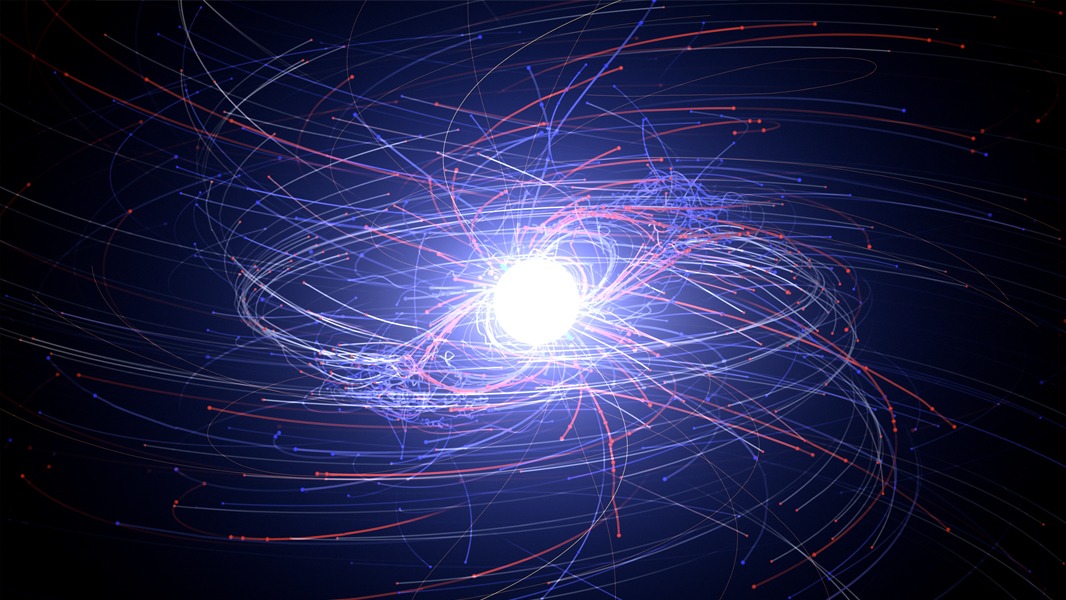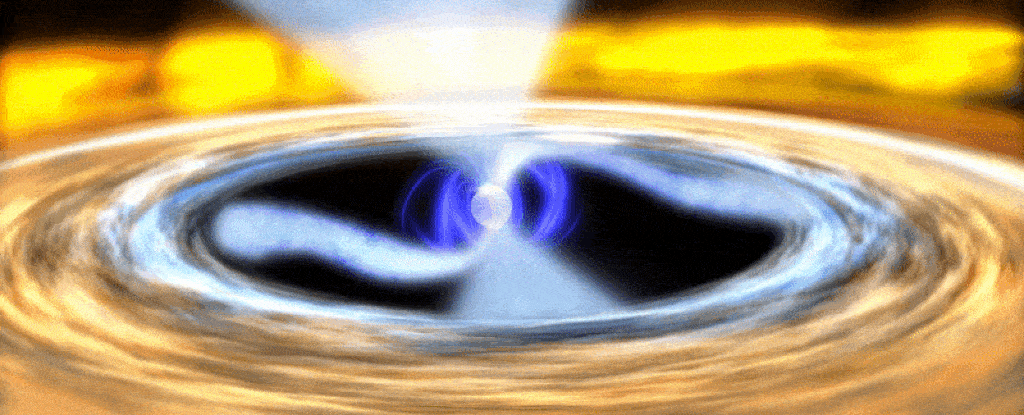A few hundred milliseconds is faster than you blink your eyes. But for neutron stars, which can be seen in the glare of two gamma-ray bursts, such time is more than enough to teach us about the life, death and birth of black holes.

Going through the archive of high-energy flares in the night sky, astronomers have discovered patterns of light fluctuations left by two different sets of colliding stars. The data indicated a very short pause during their merger, during which the densest object in the Universe was formed first, which then instantly collapsed into a black hole. This pause lasted from about 10 to 300 milliseconds, which technically equates to two neutron stars of a sufficiently large size.
“We know that short GRBs form when orbiting neutron stars crash together, and we know they eventually collapse into a black hole. We found these gamma-ray patterns in two bursts observed by the Compton Gamma Ray Observatory in the early 1990s,” says Cole Miller, an astronomer at the University of Maryland.
The most neutron star in the Universe
From what the researchers could tell, the merger momentarily spawned an object about 20% larger than the current record-breaking neutron star pulsar, whose mass was 2.14 times the mass of our Sun. Of course, such a large neutron star could not argue with the laws of physics, so it was not destined to exist in such a state for a long time and stably.
The most interesting thing is that the neutron stars accelerated to an extremely high speed before merging – almost 1300 revolutions per second. This is much faster than the record holder J1748-2446ad, which makes only 707 revolutions per second.
Beasts of Space
Neutron stars are the real beasts of the cosmos. They contain double the mass of our Sun in a volume of space about the size of a small city. Such density not only does strange things to matter, but also generates super powerful magnetic fields in the Universe. The rapid rotation of neutron stars forms polar jets that “pulse” like beacons from afar.

Neutron stars are formed when stars with a mass 8-30 times larger than our Sun burn the last fuel, then they explode with a supernova, and leave behind a bare core with a mass of about 1.1-2.3 times the mass of the Sun and a diameter of about 10-20 km. But if the mass of a neutron star during its formation exceeds the solar one by three times, then it turns into a black hole. There is another case of the formation of a black hole – the merger of two neutron stars.
Incredible transformation
At the beginning of 2022, physicists announced the observation of a gamma-ray flare called GRB 180618A, discovered back in 2018. In the afterglow of the flare, they found the signature of a magnetically charged neutron star called a magnetar. But its mass turned out to be very large, so the next day it disappeared – scientists believed that it turned into a black hole under the influence of gravity. How it managed to resist gravity for almost a day remained a mystery. Perhaps the magnetic fields of the magnetar played an important role.
Earlier we reported on how to look inside a neutron star.
According to ScienceAlert
Follow us on Twitter to get the most interesting space news in time
https://twitter.com/ust_magazine

